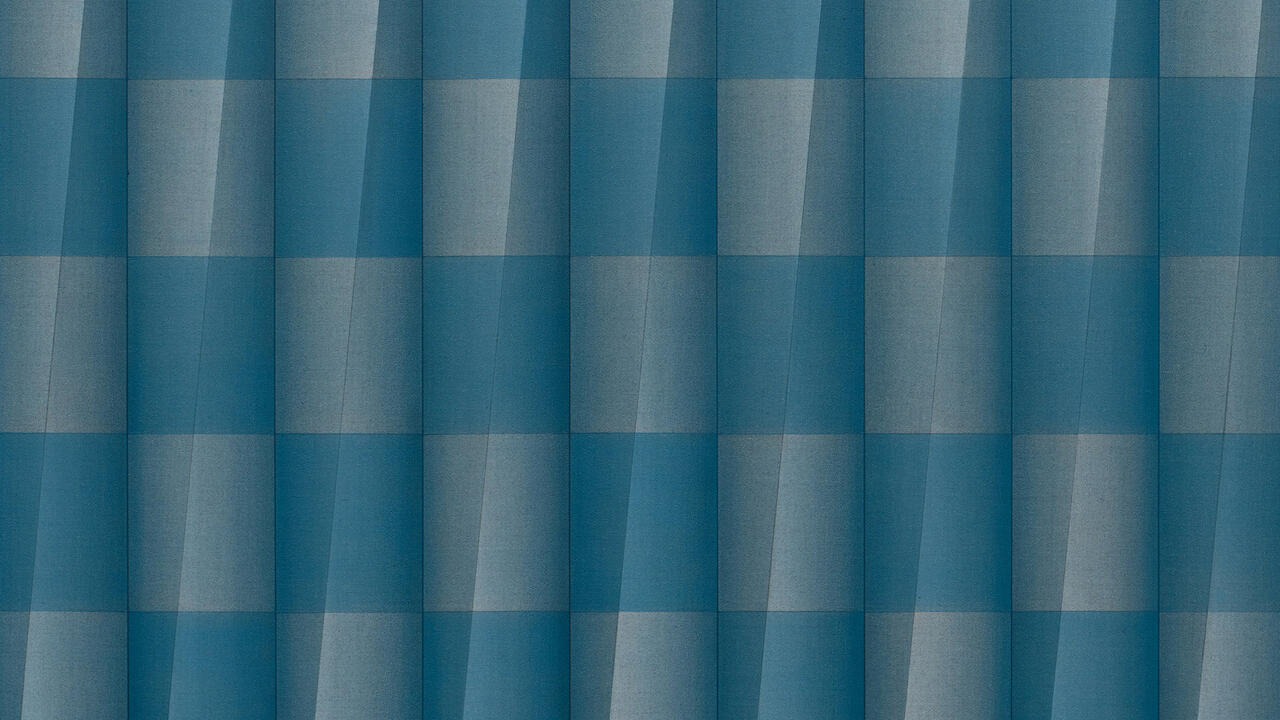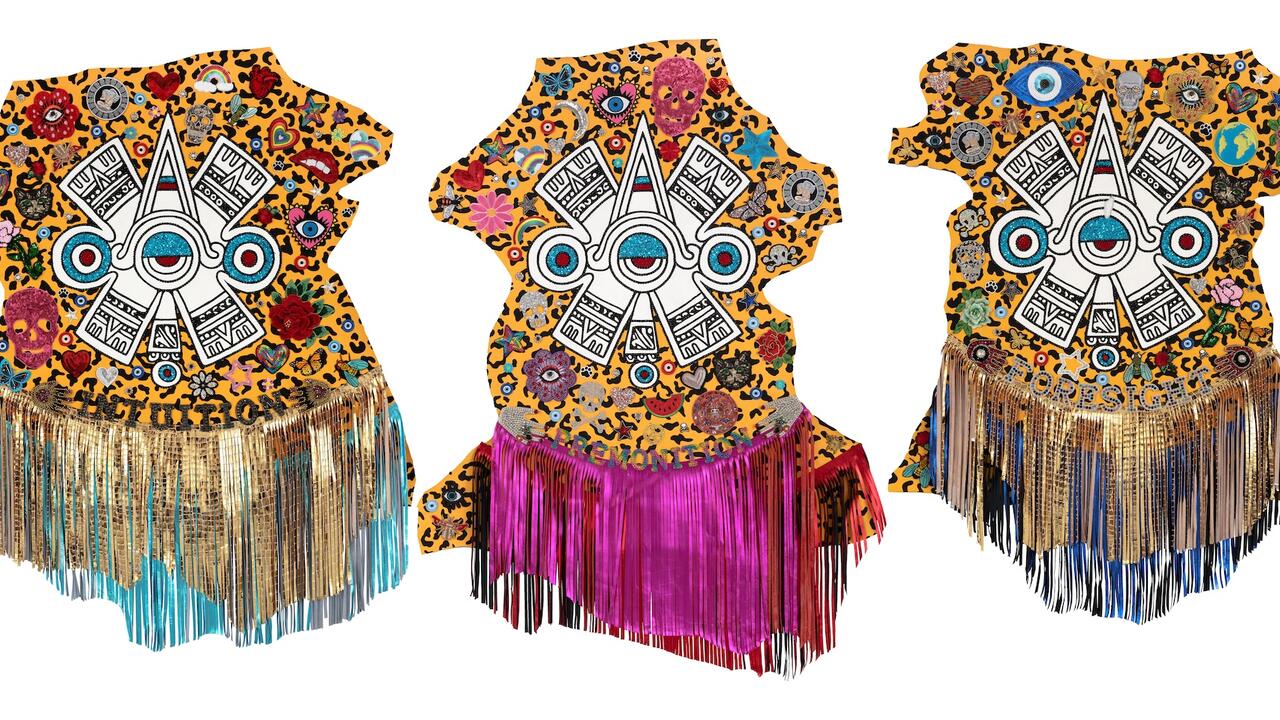Ambient Tour

The Fondazione Sandretto Re Rebaudengo has dedicated its 2007 programme to the environment, ‘not only in the ecological sense, but also as the physical space, in which our lives develop and are transformed, according to the press release. The exhibition ‘Ambient Tour’, which opened this new programme, included three Italian artists, each of whom was given a third of the Fondazione’s huge main hall in which to conceive a solo show. Christian Frosi’s installation explored both meanings of the Italian word ‘ambiente’, which might refer as much to the environment as to ambient music. Deborah Ligorio explored ancient ecosystems, and Flavio Favelli’s considered disturbing aspects of recent Italian history, poised between private and public memory.
With the use of light, flexible sculptural forms, Frosi created an engrossing environment entitled OOOOOOOOOO (2007), which drew together a host of references from sci-fi, B movies and club culture to create a particular blend of unpredictable and ironic Pop neo-Futurism. Working for the first time on such a large scale, the artist rose to the occasion and demonstrated his formal and imaginative facility for creating environments from combinatons of fluid and provisional minimal sculptural forms. While the installation as a whole may perhaps have surpassed the quality of the individual elements, there were nonetheless at least two highlights. The huge, centrally located Duna (Dune, all works 2007) references the architectural typology of the ziggurat but is made from rounded shapes of expanded polystyrene. Partially covered with sand that dried out over time, this gradually changing form is a stark reminder of the planet’s progressive desertification. Ricostruzione approssimativa di un manifesto spazialista per la televisione, trasmesso il 17 maggio 1952 dalla Rai di Milano (Approximate Reconstruction of a Spatialist Manifesto for television, transmitted on the 17th May, 1952 on Rai in Milan), is a black and white video that reinvents the aesthetic of pioneering artists such as Lucio Fontana, for Italian national television.
Ligorio’s contribution took a more directly documentary form. For some time now, the artist has been interested in questions concerning the environment. For this exhibition she travelled through several of the Italian islands in the southern Mediterranean, collecting images and data about the ways, both ancient and modern, these cultures relate to the natural environment. Around an irregular diamond-shaped perimeter constructed in the centre of the exhibition space, Ligorio arranged and projected a series of videos and wallpaper prints, under the collective title Flussi (Flows, 2006). As is often the case with Ligorio’s oeuvre, the videos have a deeply atmospheric and narrative quality, augmented by the artist’s voiceover, which, with its constant gentle intonation, holds the viewer in an almost dreamlike state. Combining graphic patterns, photos from the islands and short statements, the wallpaper functions as a visual commentary, brief written notes on the issues raised in her investigations. The use of natural images – slow and suspended – combined with the written and spoken word, invited a consideration of the sustainability of Mediterranean ecosystems, through a dialogue between centuries-old tradition and new technology.
Favelli’s contribution to the show, My Deep Dark Blu (Abissi) (2007), focused on one of the most dramatic and obscure cases from recent Italian history: the so-called Ustica Disaster, in which an aeroplane was accidentally destroyed in 1980, possibly by a military missile. As a result of this tragedy, 81 people died off the coast of Ustica, a small island near Sicily. Rather than creating a directly political or polemical piece, however, Favelli used this episode as a pretext for a poignant reflection on the forces of nature, symbolized by the depths of the Mediterranean Sea. Giardino d’inverno (Winter Garden, 2007), a basin of water surrounded by plants, occupied a central position, evocative of both an ornamental garden and a memorial. This pairing of nature and drama permeated Favelli’s entire show, which continued with a progression of profoundly symbolic objects, including a series of sculptures that recombine the forms of furniture, vitrines and window displays; an immense pleated sheet conceived as a kind of sail, or shroud, to cover a fallen plane’s hulk; a collection of clothes designed by the artist that – instead of a monogram or logo – bear references to certain tragic events from Italian history; and, lastly, a series of framed old maps of Italy, Nazione (stanza della geografia) (Nation, Geography Room, 2007) – altered, cut and recombined to create a mental and emotional geography of his country.
The environment is a tricky and slippery issue: it is difficult to contest its importance. The three artists in ‘Ambient Tour’ gave formally and conceptually original – even personal – views of the issue, avoiding a didactic approach. In doing so they reflected the theme’s complexity, and along the way faced up to a simple and dramatic question: why have we recognized the problem so late?
Luca Cerizza
Translated by Amanda Coulson
















